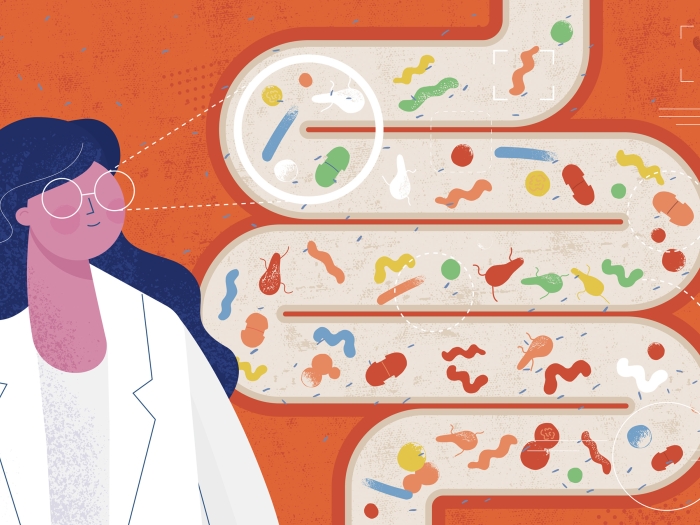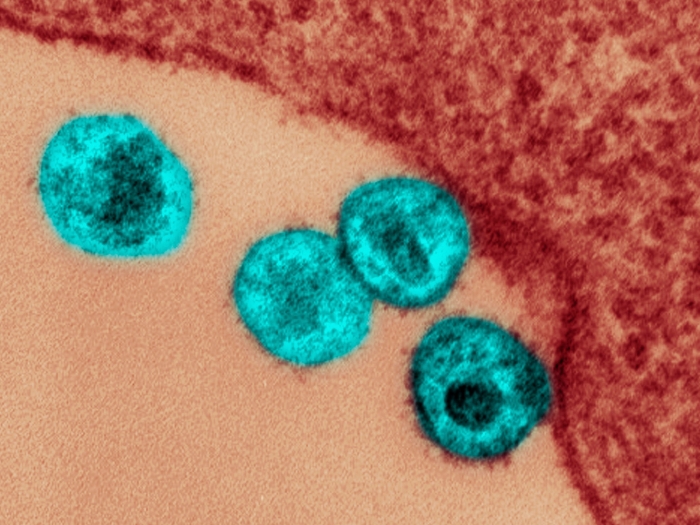U-M researchers are studying an overabundant signaling protein tied to UV light sensitivity in patients with lupus.
7:00 AM
Author |

Imagine being so sensitive to the sun's rays that you're forced to either slather yourself in sunscreen or risk a rash so severe it could leave permanent scars.
LISTEN UP: Add the new Michigan Medicine News Break to your Alexa-enabled device, or subscribe to our daily audio updates on iTunes, Google Play and Stitcher.
This is the unfortunate reality for many people with lupus. Up to 60 percent of patients with the autoimmune disease have sensitivity to ultraviolet light, a condition called photosensitivity. It can result in skin inflammation or a flare-up of a wide range of lupus symptoms, such as joint pain and fatigue.
For some patients, even the light of a photocopier is enough to trigger the disease's characteristic angry red rash.
"Studies on the photosensitivity aspect of lupus have shown a huge correlation between how photosensitive someone is and their quality of life," says J. Michelle Kahlenberg, M.D., Ph.D., assistant professor of internal medicine in the division of rheumatology at Michigan Medicine.
She and a multidisciplinary team of researchers are attempting to unlock the mystery behind this reaction. Their findings are published online in Annals of the Rheumatic Diseases.
Studies on the photosensitivity aspect of lupus have shown a huge correlation between how photosensitive someone is and their quality of life.J. Michelle Kahlenberg, M.D., Ph.D.
Their work builds on a decade's worth of research examining the link between proteins called interferons and lupus. Interferons are released by cells in response to an invasion. Typically triggered by viruses, they also can be activated by bacteria and other external threats.
Interferons alarm other cells to bolster their defenses. The function is present in all people.
"Interferons are notoriously hard to measure, but we've known they are elevated in most lupus patients," Kahlenberg says. "In this experiment, we set out to see which ones were in the skin."
Gene editing offers insight
When the researchers compared skin cells from patients with lupus and people with healthy skin, lupus epidermal skin cells called keratinocytes — the keratin-producing cells that make up the top layer of skin — showed a significant increase in interferon kappa (IFN-κ).
Next, they generated keratinocytes without IFN-κ using CRISPR/Cas9 technology, which functions like a pair of genetic scissors, to remove the gene encoding the interferon. They then compared these skin cells with another set designed to overexpress IFN-κ.
MORE FROM THE LAB: Subscribe to our weekly newsletter
"We found out that all type 1 IFN signaling goes down in basal keratinocytes when you delete, or knock out, the IFN-κ gene using CRISPR/Cas9; we also observed that IFN-κ knockout keratinocytes are unaffected by UV light," says Mrinal Sarkar, Ph.D., a research investigator with the department of dermatology at U-M.
Conversely, cells overexpressing IFN-κ died when exposed to UV light.
"We think that the probable main function of IFN-κ in normal, healthy skin is to fight off viral infections, such as HPV. But in lupus, this whole system is out of sync and overactive," explains Johann Gudjonsson, M.D., Ph.D., associate professor of dermatology.
Research moving forward
Even without exposure to UV light, lupus skin had higher baseline levels of IFN-κ. This overabundance appears to amplify the inflammatory response and cell death.
The team is trying to uncover why IFN-κ is elevated in the skin of patients with lupus and how it regulates death in keratinocytes. They also wonder if similar mechanisms are at play in other diseases with photosensitivity as a feature, such as dermatomyositis.
SEE ALSO: Investigating Kidney Biomarkers to Track Lupus
What makes this discovery particularly exciting, the team notes, is that drugs recently approved by the FDA and currently prescribed for rheumatoid arthritis can block interferons.
Using the drug baricitinib, the U-M researchers blocked interferon signaling and made lupus skin cells look like those in normal, healthy skin. Baricitinib is currently in drug trials for lupus, but not for photosensitivity.
"I'm excited to see this go from bench to bedside," Kahlenberg says. "It may actually happen that some of our work helps to push this forward."
She was also recently awarded the first Taubman Institute Innovative Project grant with her colleague, Johann E. Gudjonsson, M.D., Ph.D. for their study: Personalized medicine through integration of immune phenotypes in autoimmune skin diseases. The study investigates immune responses in the skin and blood of lupus and psoriasis patient and how disease flares and medications may alter these responses.
The team will analyze tissues at the cellular level, genetic level (using DNA profiling) and the molecular level (using mass cytometry imaging and single cell RNA sequencing) to develop a full picture of immune dysfunction in these patient groups. The five-year study hopes to lead to more targeted, personalized therapies in autoimmune diseases.
The work was in part supported by the University of Michigan Babcock Endowment Fund, the National Institute of Arthritis and Musculoskeletal and Skin Diseases of the National Institutes of Health under Award Numbers R03AR066337, K08AR063668, K08-AR060802, T32AR007080, R01-AR071384 and R01-AR069071, the A. Alfred Taubman Medical Research Institute Parfet Emerging Scholar Award and Kenneth and Frances Eisenberg Emerging Scholar Award, Doris Duke Charitable Foundation Grant #2013106 and the Rheumatology Research Foundation Career Development K Supplement Award.
This article was originally published on July 25, 2018, and was updated on January 25, 2019.

Explore a variety of healthcare news & stories by visiting the Health Lab home page for more articles.

Department of Communication at Michigan Medicine
Want top health & research news weekly? Sign up for Health Lab’s newsletters today!





